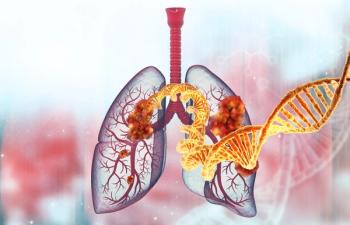
NOAC, DOAC, or TSOAC: What Should We Call Novel Oral Anticoagulants?
Since dabigatran's introduction to the US market in 2010, the medical community hasn't reached a clear consensus on the terminology for its drug class.
Since dabigatran’s introduction to the US market in 2010, the medical community hasn’t reached a clear consensus on the terminology for its drug class.
Initially, terms like “novel oral anticoagulant” (NOAC) were used extensively. But now, more than 6 years have passed and 3 additional NOACs have been approved by the FDA. The recognition that these drugs are no longer novel has led guidelines and international societies to reassess their nomenclature.
History
The first oral anticoagulant, warfarin, was approved by the FDA in 1954.1 For more than 60 years, warfarin was the only mainstream oral anticoagulant used in the United States.
Unlike all other anticoagulants, warfarin’s mechanism of action is quite unique. Instead of binding to active clotting factors to induce anticoagulation, it reduces the total amount of clotting factors in the circulation. Specifically, by inhibiting the C1 subunit of vitamin K epoxide reductase enzyme complex, the liver is unable to produce vitamin K-depending clotting factors II, VII, IX, X and the endogenous anticoagulants proteins C and S.2
NOAC Concept
The term “novel” was initially applied to dabigatran (Pradaxa) when it was introduced to the US market in 2010.1 Instead of reducing clotting factor production (like warfarin) or binding to antithrombin III to induce anticoagulation (like heparin and heparin derivatives), dabigatran directly binds to clotting factor IIa (thrombin). This mechanism was novel for an oral anticoagulant and even for most parenteral anticoagulants.
A year later, in 2011, rivaroxaban (Xarelto) was approved by the FDA. Rivaroxaban binds directly to clotting factor Xa (the clotting factor responsible for activating prothrombin to thrombin). Over the next 4 years, 2 additional direct clotting factor Xa inhibitors (apixaban [Eliquis] and edoxaban [Savaysa]) were approved.
After 6 years, the idea of these oral anticoagulants being novel doesn’t seem applicable. Therefore, various organizations have proposed more durable names to refer to this important class of oral anticoagulants.
The “N” in NOAC
Although it originally stood for “novel,” it stands for “non-vitamin K” in the
By adopting NOAC (non-vitamin K), the CHEST guidelines preserved the well-known acronym but updated it to avoid issues with these agents no longer being novel. Using the same acronym helps include terms within Internet searches and literature evaluations for “NOAC” even though the meaning has been modified.
Critics of the NOAC terminology cite that “non-vitamin K” contains several letters not captured in the acronym, and NOAC may be misunderstood to mean “NO AntiCoagulants,” which could potentially be a life-threatening mistake.
Alternative Acronyms
The most popular competing term is “DOAC,” which stands for direct oral anticoagulant. This terminology reflects the novel mechanism of the newer anticoagulants (directly binding to specific clotting factors), which may even reflect future oral anticoagulants that haven’t been developed, like those directly binding to other clotting factors (aside from Xa or IIa) within the clotting cascade.
Although the CHEST guidelines have endorsed the term NOAC, the International Society on Thrombosis and Haemostasis (ISTH) endorsed the DOAC acronym in a 2015 recommendation statement largely based on a small survey of 77 board members on thrombosis, hemostasis, anticoagulation, and vascular medicine societies from North America and Europe. In the survey, respondents slightly preferred DOAC (29.9%) over NOAC (28.6%), although the survey asked several questions regarding the safety concerns of the acronym NOAC (being misconstrued as “no anticoagulant”), which likely biased the participants.4
TSOAC (target-specific oral anticoagulant), ODI (oral direct inhibitor), and SODA (specific oral direct anticoagulant) are described in the literature and were present in the ISTH survey, but seem unlikely to become adopted in the future.4
Standardization of Terminology
In the ISTH survey, 89.6% of respondents agreed that a single consensus term is necessary to describe the newest oral anticoagulant drug class.4 Although NOAC was the first terminology used and is now adopted by the CHEST 2016 guidelines, it has major limitations regarding the meaning of “N” and safety implications.
DOAC seems to be a very reasonable term moving forward that should be embraced by clinicians to describe these new oral anticoagulants and oral coagulants with similar direct mechanisms that haven’t yet been released.
References
- How CH. Novel oral anticoagulants for atrial fibrillation. Singapore Med J. 2015 Dec;56(12):657-8; quiz 659.
- Coumadin [package insert]. Princeton, New Jersey: Bristol-Myers Squibb Company; 2015.
- Kearon C, et al. Antithrombotic Therapy for VTE Disease: CHEST Guideline and Expert Panel Report. Chest. 2016 Feb;149(2):315-352.
- Barnes GD, et al. Recommendation on the nomenclature for oral anticoagulants: communication from the SSC of the ISTH. J Thromb Haemost. 2015 Jun;13(6):1154-1156.
Newsletter
Stay informed on drug updates, treatment guidelines, and pharmacy practice trends—subscribe to Pharmacy Times for weekly clinical insights.















































































































































































































